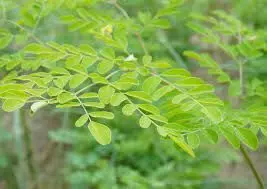- Home
- Medical news & Guidelines
- Anesthesiology
- Cardiology and CTVS
- Critical Care
- Dentistry
- Dermatology
- Diabetes and Endocrinology
- ENT
- Gastroenterology
- Medicine
- Nephrology
- Neurology
- Obstretics-Gynaecology
- Oncology
- Ophthalmology
- Orthopaedics
- Pediatrics-Neonatology
- Psychiatry
- Pulmonology
- Radiology
- Surgery
- Urology
- Laboratory Medicine
- Diet
- Nursing
- Paramedical
- Physiotherapy
- Health news
- AYUSH
- State News
- Andaman and Nicobar Islands
- Andhra Pradesh
- Arunachal Pradesh
- Assam
- Bihar
- Chandigarh
- Chattisgarh
- Dadra and Nagar Haveli
- Daman and Diu
- Delhi
- Goa
- Gujarat
- Haryana
- Himachal Pradesh
- Jammu & Kashmir
- Jharkhand
- Karnataka
- Kerala
- Ladakh
- Lakshadweep
- Madhya Pradesh
- Maharashtra
- Manipur
- Meghalaya
- Mizoram
- Nagaland
- Odisha
- Puducherry
- Punjab
- Rajasthan
- Sikkim
- Tamil Nadu
- Telangana
- Tripura
- Uttar Pradesh
- Uttrakhand
- West Bengal
- Medical Education
- Industry
Moringa oleifera leaves are effective for hypersensitivity and formation of biomimetic cementum tissue

Moringa oleifera leaves are effective for hypersensitivity and formation of biomimetic cementum tissue suggests a new study published in the Scientific Reports.
A study was done to evaluate the biomimetic remineralization capabilities of Moringa oleifera leaves (MOL) extract on coronal dentin and acellular cementum, two different concentrations (50 and 200 mg/ml) of MOL extract loaded in plain varnish (M1 and M2 groups respectively) were compared to fluoride varnish (FL group) and native surface (C group). Eighty sound premolar teeth were collected. Forty teeth (10 teeth in each group) were used for coronal dentin testing while the other forty (10 teeth in each group) were used for acellular cementum testing. Teeth in M1, M2, and FL groups were etched for 30 s and then received the specific varnish treatment.
All samples were immersed in artificial saliva for 14 days and then collected, dried, and examined by scanning electron microscopy and energy dispersive X-ray spectroscopy (EDX). Histologically, FL group showed mineral deposition as discrete vesicular granules of various sizes on the surface of both coronal dentin and acellular cementum. Mineral deposition only occurred on some DTs openings while opened tubules remained. The surface of the acellular cementum revealed regular grooves, micro-fissures, and cracks. In the M1 and M2 groups, mineral deposition appeared as a homogenous continuous layer on coronal dentin and acellular cementum. Only a few DTs and cementum fissures were not filled completely. In L.S. sections of the coronal one-third, the DTs appeared almost sealed with varying lengths of mineral deposition. EDX results statistical analysis showed that the M2 group had the highest phosphate ions (P−) and calcium ions (Ca+2) at%.
MOL has an extraordinary effect on the remineralization of coronal dentin and acellular cementum. It would have a promising ability to control dentinal hypersensitivity and formation of biomimetic cementum tissue.
Reference:
Obeid, R.F., Ammar, M.M. & Younis, S.H. Dentinomimetics and cementomimetics of Moringa oleifera leaves extract. Sci Rep 13, 19243 (2023). https://doi.org/10.1038/s41598-023-46656-1
Keywords:
Obeid, R.F., Ammar, M.M. & Younis, S.H, Dentinomimetics, cementomimetics, Moringa, oleifera, leaves, extract, Sci Rep
Dr. Shravani Dali has completed her BDS from Pravara institute of medical sciences, loni. Following which she extensively worked in the healthcare sector for 2+ years. She has been actively involved in writing blogs in field of health and wellness. Currently she is pursuing her Masters of public health-health administration from Tata institute of social sciences. She can be contacted at editorial@medicaldialogues.in.


